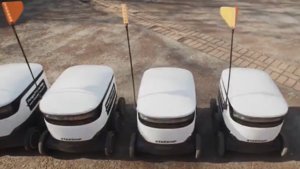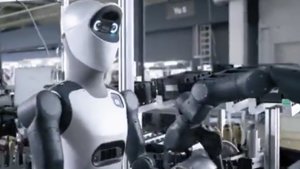In the relentless, slightly alarming march to furnish every inanimate object with a mind of its own, San Francisco-based OpenMind has just pulled off a rather brilliant unveiling: the BrainPack. This isn’t just any old bit of kit; it’s a hardware-and-software system that straps onto a robot like that parasitic twin you actually want, imbuing it with what the company rather grandly calls “real-world intelligence.” And at the very heart of this clip-on cortex hums the jaw-droppingly potent NVIDIA Jetson Thor, a compact supercomputer specifically engineered to handle the complex, real-time reasoning required for physical AI.
The BrainPack aims to be nothing short of the Rosetta Stone for robot autonomy, handling the truly heavy cognitive lifting – think 3D mapping, object recognition, autonomous charging, and even privacy-preserving vision (by automatically blurring faces) – for any compatible robot body. The first lucky host to get this brain transplant is a Unitree G1 humanoid, but OpenMind’s ambition stretches far beyond a single model. CEO Jan Liphardt, a Stanford professor with a glint in his eye, declared, “We’ve built the bridge between robotics and intelligence,” aiming to provide a hardware-agnostic platform that lets robot makers faff about with the mechanics while OpenMind handles all the serious thinking.
Why Is This Important?
For what feels like eons, the robotics industry has been a bit of a closed shop, dominated by sprawling, impenetrable walled gardens. Buying a robot often meant signing up for a single, hermetically sealed ecosystem where the hardware, software, and AI were all inextricably tangled up like a particularly stubborn knot. This vendor lock-in didn’t just stifle innovation; it turned any thought of upgrading into a costly, soul-crushing nightmare. OpenMind’s audacious strategy is to deliver a knockout blow to that model by cleverly decoupling the “brain” from the “body.” By conjuring an “Android for robotics,” they aim to commoditise the intelligence layer, allowing any hardware to run a powerful, standardised autonomous system. If they pull this off, it could dramatically accelerate the deployment of genuinely useful robots by sparking a competitive, interoperable market for both robotic bodies and their newly liberated AI minds.






